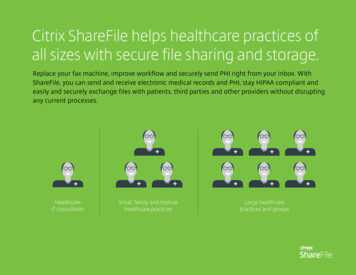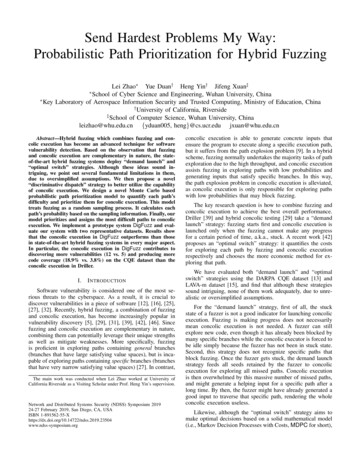
Transcription
Send Hardest Problems My Way:Probabilistic Path Prioritization for Hybrid FuzzingLei Zhao Yue Duan† Heng Yin† Jifeng Xuan‡of Cyber Science and Engineering, Wuhan University, China Key Laboratory of Aerospace Information Security and Trusted Computing, Ministry of Education, China† University of California, Riverside‡ School of Computer Science, Wuhan University, Chinaleizhao@whu.edu.cn {yduan005, heng}@cs.ucr.edu jxuan@whu.edu.cn SchoolAbstract—Hybrid fuzzing which combines fuzzing and concolic execution has become an advanced technique for softwarevulnerability detection. Based on the observation that fuzzingand concolic execution are complementary in nature, the stateof-the-art hybrid fuzzing systems deploy “demand launch” and“optimal switch” strategies. Although these ideas sound intriguing, we point out several fundamental limitations in them,due to oversimplified assumptions. We then propose a novel“discriminative dispatch” strategy to better utilize the capabilityof concolic execution. We design a novel Monte Carlo basedprobabilistic path prioritization model to quantify each path’sdifficulty and prioritize them for concolic execution. This modeltreats fuzzing as a random sampling process. It calculates eachpath’s probability based on the sampling information. Finally, ourmodel prioritizes and assigns the most difficult paths to concolicexecution. We implement a prototype system DigFuzz and evaluate our system with two representative datasets. Results showthat the concolic execution in DigFuzz outperforms than thosein state-of-the-art hybrid fuzzing systems in every major aspect.In particular, the concolic execution in DigFuzz contributes todiscovering more vulnerabilities (12 vs. 5) and producing morecode coverage (18.9% vs. 3.8%) on the CQE dataset than theconcolic execution in Driller.I.I NTRODUCTIONSoftware vulnerability is considered one of the most serious threats to the cyberspace. As a result, it is crucial todiscover vulnerabilities in a piece of software [12], [16], [25],[27], [32]. Recently, hybrid fuzzing, a combination of fuzzingand concolic execution, has become increasingly popular invulnerability discovery [5], [29], [31], [39], [42], [46]. Sincefuzzing and concolic execution are complementary in nature,combining them can potentially leverage their unique strengthsas well as mitigate weaknesses. More specifically, fuzzingis proficient in exploring paths containing general branches(branches that have large satisfying value spaces), but is incapable of exploring paths containing specific branches (branchesthat have very narrow satisfying value spaces) [27]. In contrast,The main work was conducted when Lei Zhao worked at University ofCalifornia Riverside as a Visiting Scholar under Prof. Heng Yin’s supervision.Network and Distributed Systems Security (NDSS) Symposium 201924-27 February 2019, San Diego, CA, USAISBN .23504www.ndss-symposium.orgconcolic execution is able to generate concrete inputs thatensure the program to execute along a specific execution path,but it suffers from the path explosion problem [9]. In a hybridscheme, fuzzing normally undertakes the majority tasks of pathexploration due to the high throughput, and concolic executionassists fuzzing in exploring paths with low probabilities andgenerating inputs that satisfy specific branches. In this way,the path explosion problem in concolic execution is alleviated,as concolic execution is only responsible for exploring pathswith low probabilities that may block fuzzing.The key research question is how to combine fuzzing andconcolic execution to achieve the best overall performance.Driller [39] and hybrid concolic testing [29] take a “demandlaunch” strategy: fuzzing starts first and concolic execution islaunched only when the fuzzing cannot make any progressfor a certain period of time, a.k.a., stuck. A recent work [42]proposes an “optimal switch” strategy: it quantifies the costsfor exploring each path by fuzzing and concolic executionrespectively and chooses the more economic method for exploring that path.We have evaluated both “demand launch” and “optimalswitch” strategies using the DARPA CQE dataset [13] andLAVA-m dataset [15], and find that although these strategiessound intriguing, none of them work adequately, due to unrealistic or oversimplified assumptions.For the “demand launch” strategy, first of all, the stuckstate of a fuzzer is not a good indicator for launching concolicexecution. Fuzzing is making progress does not necessarilymean concolic execution is not needed. A fuzzer can stillexplore new code, even though it has already been blocked bymany specific branches while the concolic executor is forced tobe idle simply because the fuzzer has not been in stuck state.Second, this strategy does not recognize specific paths thatblock fuzzing. Once the fuzzer gets stuck, the demand launchstrategy feeds all seeds retained by the fuzzer to concolicexecution for exploring all missed paths. Concolic executionis then overwhelmed by this massive number of missed paths,and might generate a helping input for a specific path after along time. By then, the fuzzer might have already generated agood input to traverse that specific path, rendering the wholeconcolic execution useless.Likewise, although the “optimal switch” strategy aims tomake optimal decisions based on a solid mathematical model(i.e., Markov Decision Processes with Costs, MDPC for short),
of-the-art hybrid fuzzing strategies (“demand launch”and “optimal switch”), and discover several importantlimitations that have not been reported before.it is nontrivial to quantify the costs of fuzzing and concolicexecution for each path. For instance, to quantify the cost ofconcolic execution for a certain path, MDPC requires to collectthe path constraint, which is already expensive. As a result, theoverall throughput of MDPC is greatly reduced. Furthermore,when quantifying the cost of fuzzing, MDPC assumes auniform distribution on all test cases. This assumption isoversimplified, as many state-of-the-art fuzzing techniques [4],[12], [16] are adaptive and evolutionary. Finally, even if thecosts of fuzzing and concolic execution can be accuratelyestimated, it is challenging to normalize them for a unifiedcomparison, because these two costs are estimated by techniques with different metrics.Based on these observations, we argue for the followingdesign principles when building a hybrid fuzzing system:1) since concolic execution is several orders of magnitudeslower than fuzzing, we should only let it solve the “hardestproblems”, and let fuzzing take the majority task of pathexploration; and 2) since high throughput is crucial for fuzzing,any extra analysis must be lightweight to avoid adverse impacton the performance of fuzzing.We propose a novel “discriminative dispatch” strategyas a better way to construct a hybrid fuzzing system.It follows two design principles: 1) let fuzzing conduct the majority task of path exploration and onlyassign the most difficult paths to concolic execution;and 2) the quantification of path difficulties mustbe lightweight. To achieve these two principles, wedesign a Monte Carlo based probabilistic path prioritization model. We implement a prototype system DigFuzz, and evaluate its effectiveness using the DARPA CQE datasetand LAVA dataset. Our experiments demonstrate thatDigFuzz outperforms the state-of-the-art hybrid systems Driller and MDPC with respect to more discovered vulnerabilities and higher code coverage.II.In this paper, we propose a “discriminative dispatch”strategy to better combine fuzzing and concolic execution. Thatis, we prioritize paths so that concolic execution only workson selective paths that are most difficult for fuzzing to breakthrough. Therefore, the capability of concolic execution isbetter utilized. Then the key for this “discriminative dispatch”strategy to work is a lightweight method to quantify thedifficulty level for each path. Prior work solves this problemby performing expensive symbolic execution [18], and thus isnot suitable for our purpose.BACKGROUND AND M OTIVATIONFuzzing [30] and concolic execution [9] are two representative techniques for software testing and vulnerability detection.With the observation that fuzzing and concolic execution cancomplement each other in nature, a series of techniques [5],[29], [31], [39], [42] have been proposed to combine themtogether and create hybrid fuzzing systems. In general, thesehybrid fuzzing systems fall into two categories: “demandlaunch” and “optimal switch”.A. Demand LaunchIn particular, we propose a novel Monte Carlo basedprobabilistic path prioritization (M CP 3 ) model, to quantifyeach path’s difficulty in an efficient manner. To be morespecific, we quantify a path’s difficulty by its probability ofhow likely a random input can traverse this path. To calculatethis probability, we use the Monte Carlo method [35]. Thecore idea is to treat fuzzing as a random sampling process,consider random executions as samples to the whole programspace, and then calculate each path’s probability based on thesampling information.The state-of-the-art hybrid schemes such as Driller [39]and hybrid concolic testing [29] deploy a “demand launch”strategy. In Driller [39], the concolic executor remains idleuntil the fuzzer cannot make any progress for a certain periodof time. It then processes all the retained inputs from the fuzzersequentially to generate inputs that might help the fuzzer andfurther lead to new code coverage. Similarly, hybrid concolictesting [29] obtains both a deep and a wide exploration ofprogram state space via hybrid testing. It reaches programstates quickly by leveraging the ability of random testingand then explores neighbor states exhaustively with concolicexecution.We have implemented a prototype system called DigFuzz.It leverages a popular fuzzer, American Fuzzy Lop (AFL) [47],as the fuzzing component, and builds the concolic executor ontop of Angr, an open-source symbolic execution engine [38].We evaluate the effectiveness of DigFuzz using the CQE binaries from DARPA Cyber Grand Challenge [13] and the LAVAdataset [15]. The evaluation results show that the concolicexecution in DigFuzz contributes significantly more to theincreased code coverage and increased number of discoveredvulnerabilities than state-of-the-art hybrid systems. To be morespecific, the concolic execution in DigFuzz contributes todiscovering more vulnerabilities (12 vs. 5) and producing morecode coverage (18.9% vs. 3.8%) on the CQE dataset than theconcolic execution in Driller [39].In a nutshall, two assumptions must hold in order to makethe “demand launch” strategy work as expected:(1) A fuzzer in the non-stuck state means the concolic execution is not needed. The hybrid system should start concolicexecution only when the fuzzer gets stuck.(2) A stuck state suggests the fuzzer cannot make any progressin discovering new code coverage in an acceptable time.Moreover, the concolic execution is able to find and solvethe hard-to-solve condition checks that block the fuzzer sothat the fuzzing could continue to discovery new coverage.Observations. To assess the performance of the “demandlaunch” strategy, we carefully examine how Driller works on118 binaries from DARPA Cyber Grand Challenge (CGC) for12 hours and find five interesting yet surprising facts.Contributions. The contributions of the paper are summarizedas follows: We conduct an independent evaluation of two state2
01 3 5 7 9 11 13 15 17 19 21 23 25 27 29 31 33 35 37 39 41 43 45 47 49Binary ID2000801600Percentage (%)10060# of inputs taken byconcolic execution# of inputs from thefuzzer1200408002040000100 200 300 400 500 600Period of being stuck (seconds)700Fig. 1: The distribution of the stuck state durations0Fig. 2: The number of inputs retained by the fuzzer and thenumber of inputs taken by concolic execution.concolic execution can help the fuzzing on merely 13 binariesdespite that it is launched on 49 binaries. Moreover, only 51inputs from the concolic execution are imported by the fuzzerafter 1709 runs of concolic execution, indicating a very lowquality of the inputs generated by concolic execution.(1) Driller invoked concolic execution on only 49 out of 118binaries, which means that the fuzzer only gets stuck onthese 49 binaries. This fact is on par with the numbers(42) reported in the paper of Driller [40].(2) For the 49 binaries from Fact 1, we statistically calculatethe stuck time periods, and the the distribution of stucktime periods is shown in Figure 1. We can observe thatthat more than 85% of the stuck time periods are under100 seconds.(3) On average, it takes 1654 seconds for the concolic executorto finish the dynamic symbolic execution on one concreteinput.(4) Only 7.1% (1709 out of 23915) of the inputs retained bythe fuzzer are processed by the concolic executor withinthe 12 hours of testing. Figure 2 presents this huge gapbetween the number of inputs taken by concolic executionand that the number of inputs retained by fuzzing.(5) The fuzzer in Driller can indeed get help from concolicexecution (import at least one input generated by concolicexecution) on only 13 binaries among the 49 binaries fromFact 1, with a total of 51 inputs imported after 1709 runsof concolic execution.B. Optimal SwitchThe “optimal switch” strategy aims to make an optimaldecision on which method to use to explore a given executionpath, based on a mathematical model (i.e., Markov DecisionProcesses with Costs, MDPC for short). To achieve optimalperformance, MDPC always selects the method with lowercost to explore each path. In order for this strategy to workwell, the following assumptions must hold:(1) The costs for exploring a path by fuzzing and concolicexecution can be accurately estimated.(2) The overhead of cost estimation is negligible.(3) The algorithm for making optimal decisions is lightweight.Observations. To assess the performance of “optimal switch”,we evaluate how MDPC works on the 118 binaries from theCQE dataset for 12 hours and have 3 interesting observations.Limitations. The aforementioned results indicate two majorlimitations of the “demand launch” strategy.TABLE I: Execution Time ComparisonFirst, the stuck state of a fuzzer is not a good indicator todecide whether the concolic execution is needed. Accordingto Fact 1, the fuzzer only gets stuck on 49 binaries, meaningconcolic execution is never launched for the other 77 binaries.Manual investigation on the source code of these 77 binariesshows that they all contain specific branches that can blockfuzzing. Further combining with Fact 2, we could see that thefuzzer in a stuck state does not necessarily mean it actuallyneeds concolic execution since most of the stuck states arereally short (85% of the stuck states are under 100 seconds).These facts break the Assumption 1 described above.Minimum25% percentileMedianAverage75% 4s0.0056s0.5000sConcolic execution18s767s1777s1790s2769s3600sMDPC decision0.16s13s65s149s213s672s(1) Table I shows the throughput gap among fuzzing, concolicexecution, and the optimal decision in MDPC. We canobserve that the optimal decisions is very expensive, whichis several thousand times larger than fuzzing.(2) As MDPC makes optimal decision before exploring eachpath, the overall analysis throughput is significantly reduced, from 417 executions per second in pure fuzzing to2.6 executions per second in MDPC.(3) With the impact of reduced throughput, MDPC discovers vulnerabilities only in 29 binaries, whereas the purefuzzing can discover vulnerabilities in 67 binaries.Second, the “demand launch” strategy can not recognizethe specific paths that block fuzzing, rendering very loweffectiveness for concolic execution. On one hand, concolicexecution takes 1654 seconds on average to process one input(Fact 3). On the other hand, a fuzzer often retains much moreinputs than what concolic execution could handle (Fact 4). Asa result, the input corresponding to the specific branch thatblock the fuzzing (i.e., the input that could lead executionto the target place) only has a very small chance to bepicked up and processed by concolic execution. Therefore, theAssumption 2 described above does not really hold in practice.This conclusion can be further confirmed by Fact 5 where theAs MDPC makes the optimal decision before exploringeach path, the expensive optimal decision takes away theadvance of the high throughput of fuzzing. As an optimization,we can move the optimal decision out, make it work in parallel3
with fuzzing, and build a concurrent MDPC. That is, theoptimal decision in the concurrent MDPC does not interferethe working progress of fuzzing, and it just collected coveragestatistics from fuzzing to calculate cost. From the evaluationof this concurrent MDPC, we have another observation.concolic testing. It defines the optimal strategy based on theprobability of program paths and the cost of constraint solving,and then reduces the problem as Markov Decision Processeswith Costs (MDPC for short). This study shares the similarproblem scope with our work. However, the Markov DecisionProcess itself is heavyweight for programs with large statespace. Furthermore, the costs of fuzzing and concolic executionare challenging to evaluate and normalize for comparison.(4) Nearly all the missed paths are decided to be exploredby concolic execution in several seconds after the fuzzingstarts. By examining the coverage statistics, we observethat the fuzzer is able to generate hundreds of test cases inseveral seconds, which leads to a high cost for exploring amissed path by fuzzing, based on the algorithm in MDPC.On the contrary, the cost of concolic execution is smallereven we assign the highest solving cost (50 as defined [42])to every path constraint.B. Monte Carlo Based Probabilistic Path Prioritization ModelIn this study, we propose a novel Monte Carlo basedProbabilistic Path Prioritization Model (M CP 3 for short) todeal with the challenges. In order to be lightweight, our modelapplies the Monte Carlo method to calculate the probabilityof a path to be explored by fuzzing. For the Monte Carlomethod to work effectively, two requirements need to befull-filled: 1). the sampling to the search space has to berandom; 2). a large number of random sampling is required tomake the estimations statistically meaningful. Since a fuzzerrandomly generates inputs for testing programs, our insight isto consider the executions on these inputs as random samplesto the whole program state space, thus the first requirementis satisfied. Also, as fuzzing has a very high throughput, thesecond requirement can also be met. Therefore, by regardingfuzzing as a sampling process, we can statistically estimate theprobability in a lightweight fashion with coverage statistics.Limitations. The aforementioned observations indicate thatthe key limitation of the “optimal switch” strategy is thatestimating the cost for exploring a path by fuzzing and concolicexecution is heavyweight and inaccurate, which overshadowsthe benefit of making optimal solutions.First, estimating the cost of concolic execution relies oncollecting path constraints and identifying the solving costfor these constraints. As collecting path constraints requiresconverting program statements into symbolic expressions, suchinterpretation is also heavyweight, especially for program withlong paths. In addition, MDPC designs a greedy algorithmfor optimal decision. This algorithm depends on path-sensitiveprogram analysis. For programs with large states, the pathsensitive analysis is also heavyweight.According to the Monte Carlo method, we can simplyestimate the probability of a path by statistically calculatingthe ratio of executions traverse this path to all the executions.However, this intuitive approach is not practical, becausemaintaining path coverage is a challenging and heavyweighttask. With this concern, most of the current fuzzing techniquesadopt a lightweight coverage metric such as block coverageand branch coverage. For this challenge, we treat an executionpath as a Markov Chain of successive branches, inspired by aprevious technique [4]. Then, the probability of a path can becalculated based on the probabilities of all the branches withinthe path.Second, it is nontrivial to accurately estimate cost forexploring a given path by fuzzing and concolic execution.MDPC estimates the solving cost based on the complexityof equalities, and estimates the cost of random testing basedon coverage statistics. These estimations are concerned withthe runtime throughput of fuzzing, the performance of theconstraint solver, and the symbolic execution engine, andeach of them are different program analysis techniques innature. Therefore, it is challenging to define a unified metricto evaluating the cost of different techniques.III.Probability for each branch. The probability of a branchquantifies the difficulty for a fuzzer to pass a conditioncheck and explore the branch. Equation 1 shows how M CP 3calculates the probability of a branch.P ROBABILISTIC PATH P RIORITIZATION G UIDED BYM ONTE -C ARLOTo address the aforementioned limitations of the currenthybrid fuzzing systems, we propose a novel “discriminativedispatch” strategy to better combine fuzzing and concolicexecution.(P (bri ) A. Key ChallengeAs discussed above, the key challenge of our strategy isto quantify the difficulty of traversing a path for a fuzzer ina lightweight fashion. There are solutions for quantifying thedifficulty of a path using expensive program analysis, such asvalue analysis [45] and probabilistic symbolic execution [5].However, these techniques do not solve our problem: if wehave already performed heavyweight analysis to quantify thedifficulty of a path, we might as well just solve the pathconstraints and generate an input to traverse the path. Arecent study [42] proposes a theoretical framework for optimalcov(bri )cov(bri ) cov(brj ) ,3cov(brj ) ,cov (bri ) 6 0cov (bri ) 0(1)In Equation 1, bri and brj are two branches that share thesame predecessor block, and cov(bri ) and cov(brj ) refer tothe coverage statistics of bri and brj , representing how manytimes bri and brj are covered by the samples from a fuzzerrespectively.When bri has been explored by fuzzing (cov(bri ) is nonzero), the probability for bri can be calculated as the coveragestatistics of bri divided by the total coverage statistics of briand brj .4
builds the concolic executor on top of angr [38], an opensource symbolic execution engine, the same as Driller [39].When bri has never been explored before (cov(bri ) is zero),we deploy the rule of three in statistics [43] to calculate theprobability of bri . The rule of three states that if a certainevent did not occur in a sample with n subjects, the intervalfrom 0 to 3/n is a 95% confidence interval for the rate ofoccurrences in the population. When n is greater than 30, thisis a good approximation of results from more sensitive tests.Following this rule, the probability of bri becomes 3/cov (brj )if cov(brj ) is larger than 30. If cov(brj ) is less than 30, theprobability is not statistically meaningful. That is, we will notcalculate the probabilities until the coverage statistics is largerthan 30.The most important component in DigFuzz is the M CP 3model. This component performs execution sampling, constructs the M CP 3 based execution tree, prioritizes pathsbased on the probability calculation, and eventually feeds theprioritized paths to the concolic executor.DigFuzz starts the testing by fuzzing with initial seedinputs. As long as inputs are generated by the fuzzer, theM CP 3 model performs execution sampling to collect coverage statistics which indicate how many times each branch iscovered during the sampling. Simultaneously, it also constructsthe M CP 3 based execution tree through trace analysis andlabels the tree with the probabilities for all branches thatare calculated from the coverage statistics. Once the treeis constructed and paths are labeled with probabilities, theM CP 3 model prioritizes all the missed paths in the tree, andidentifies the paths with the lowest probability for concolicexecution.Probability for each path. To calculate the probability for apath, we apply the Markov Chain model [19] by viewing apath as continuous transitions among successive branches [4].The probability for a fuzzer to explore a path is calculated asEquation 2.P (pathj ) Y{P (bri ) bri pathj }(2)As concolic execution simultaneously executes programson both concrete and symbolic values for simplifying pathconstraints, once a missed path is prioritized, the M CP 3model will also identifies a corresponding input that can guidethe concolic execution to reach the missed path. That is, bytaking the input as a concrete value, the concolic executorcan execute the program along the prefix of the missed path,generate and collect symbolic path constraints. When reachingto the missed branch, it can generate the constraints forthe missed path by conjoining the constraints for the pathprefix with the condition to this missed branch. Finally, theconcolic executor generates inputs for missed paths by solvingpath constraints, and feeds the generated inputs back to thefuzzer. Meanwhile, it also updates the execution tree with thepaths that have been explored during concolic execution. Byleveraging the new inputs from the concolic execution, thefuzzer will be able to move deeper, extent code coverage andupdate the execution tree.The pathj in Equation 2 represents a path, bri refers to abranch covered by the path and P (bri ) refers the probability ofbri . The probability of pathj shown as P (pathj ) is calculatedby multiplying the probabilities of all branches along the pathtogether.C. M CP 3 based Execution TreeIn our “discriminative dispatch” strategy, the key ideais to infer and prioritize paths for concolic execution fromthe runtime information of executions performed by fuzzing.For this purpose, we construct and maintain a M CP 3 basedexecution tree, which is defined as follows:Definition 1. An M CP 3 based execution tree is a directedtree T (V, E, α), where: Each element v in the set of vertices V corresponds to aunique basic block in the program trace during an execution;To sum up, DigFuzz works iteratively. In each iteration, theM CP 3 model updates the execution tree through trace analysis on all the inputs retained by the fuzzer. Then, this modellabels every branch with its probability that is calculated withcoverage statistics on execution samples. Later, the M CP 3model prioritizes all missed paths, and selects the path withthe lowest probability for concolic execution. The concolicexecutor will generate inputs for missed branches along thetrace, return the generated inputs to the fuzzer, and updatethe execution tree with paths that have been explored duringconcolic execution. After these steps, DigFuzz will enter intoanother iteration. Each element e in the set of edges E V V correspondsto the a control flow dependency between two vertices v andw , where v , w V . One vertex can have two outgoing edgesif it contains a condition check; The labeling function α : E Σ associates edgeswith the labels of probabilities, where each label indicates theprobability for a fuzzer to pass through the branch.IV.D ESIGN AND I MPLEMENTATIONIn this section, we present the system design and implementation details for DigFuzz.B. Execution SamplingRandom sampling is required for DigFuzz to calculateprobabilities using the Monte Carlo method [35]. Based on theobservation that a fuzzer by nature generates inputs randomly,we consider the fuzzing process as a random sampling processto the whole program space. Due to the high throughput offuzzing, the number of generated samples will quickly becomelarge enough to be statistically meaningful, which is definedby rule of three [43] where the interval from 0 to 3/n is a 95%A. System OverviewFigure 3 shows the overview of DigFuzz. It consists ofthree major components: 1) a fuzzer; 2) the M CP 3 model;and 3) a concolic executor.Our system leverages a popular off-the-shelf fuzzer, American Fuzzy Lop (AFL) [47] as the fuzzing component, and5
Probabilistic path prioritization model based on Monte CarloInitialinputb1Execution treeconstructionFuzzingb2Probabilitybased pathprioritizationb3Execution samplingb4Newinputsb6b8PrioritizedpathsConcolic executionFig. 3: Overview of DigFuzzAlgorithm 1 Execution d main(argv) {P {Target binary}F uzzer {Fuzzer in DigFuzz }Setinputs {Initial seeds}HashM apCovStat ; SetN ewInputs recv(in);switch (argv[1]) {b6b7res is valid(in)if (!res)b1b2case ‘A’:chk in(in);b8b9return;if (strcmp(in, ‘BK’) 0);b3b4case ‘B’:is valid(in);b11b5break;default: b12b13if all char(in)return 1;b14return 0; }break;while True doSetN ewInputs F uzzer{P, Setinputs }for input SetN ewInputs doCoverage GetCoverage(P, input)for branch Coverage doIndex Hash(branch)HashM apCovStat {Index} end forend forSetinputs Setinputs SetN ewInputsend whileoutput the HashM apCovStat as coverage statisticsint chk in () {}}b10//vulnerabilityelse }int is valid(in) {Fig. 4: Running ExampleAlgorithm 2 Execution Tree :confidence interval when the number of samples is greater than30.Following this observation, we present Algorithm 1 toperform the sampling. This algorithm accepts three inputs andproduces the coverage statistics in a HashM ap. The threeinputs are: 1) the target binary P ; 2) the fuzzer F uzzer;and 3) the initial seeds stored in Setinputs . Given the threeinputs, the algorithm iteratively performs the sampling duringfuzzing. F uzzer takes P and Setinputs to generate newinputs as SetN ewInputs (Ln. 7). Then, for each input i
probabilistic path prioritization model to quantify each path's difficulty and prioritize them for concolic execution. This model treats fuzzing as a random sampling process. It calculates each path's probability based on the sampling information. Finally, our model prioritizes and assigns the most difficult paths to concolic execution.
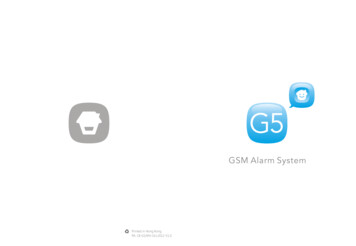


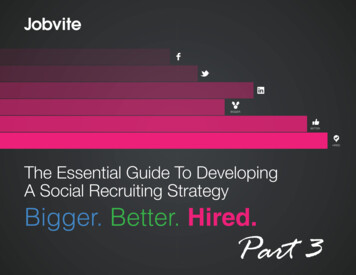

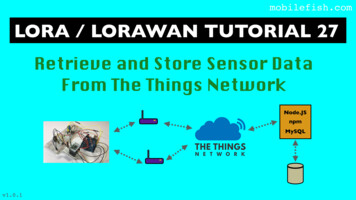
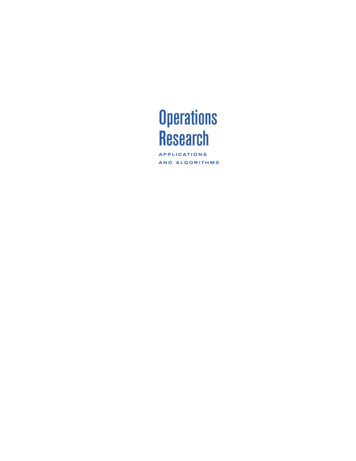

![W ELCOME [storage.cloversites ]](/img/32/bul-2011-2-14-202.jpg)
